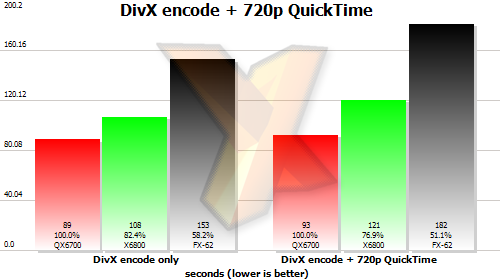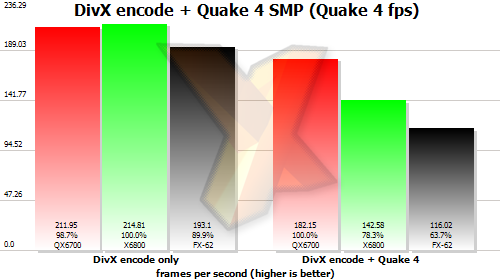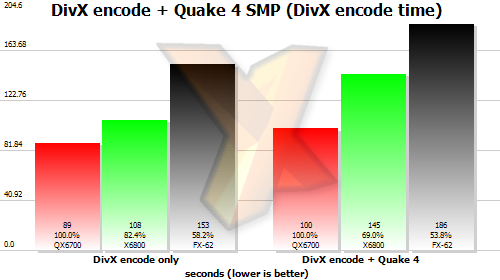Multitasking
Running multiple apps at the same time should be a quad-core processor’s forte, so we performed a number of tests to try out this hypothesis. Our first scenario consisted of running our DivX encoding test whilst playing a 720p QuickTime movie, and recording how long the encode took. Our second scenario involved running the DivX encode whilst playing Quake 4 at 1,024 x 768, recording both the time taken and the Quake 4 frame rate. Our final scenario involved our subjective experience of playing Quake 4 with a batch of DivX encodes running in the background – a likely activity.

With our first scenario, the DivX encode was around 4 per cent slower with the movie running on the Core 2 Extreme QX6700. But the Core 2 Duo X6800 was 11 per cent slower, and the Athlon 64 FX-62 16 per cent slower. So there is a clear, if small benefit from the extra two cores.


The differences between quad-core and dual-core are obvious here. The Quake 4 frame rate has dropped around 14 per cent with the QX6700, but 34 per cent with the X6800 and 40 per cent with the Athlon 64 FX-62. At the same time, the DivX encode took 11 per cent longer on the QX6700, but 26 per cent longer on the Core 2 Duo and 18 per cent longer on the Athlon 64 FX-62. Subjectively, we found we could play Quake 4 whilst DivX was encoding in the background with no noticeable lag.









